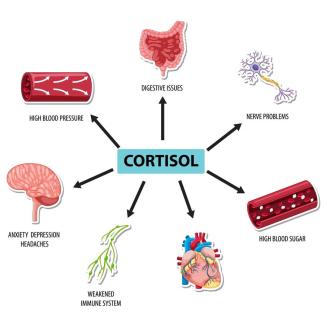
The question of why women tend to live longer than men is a multifaceted issue that spans across biological, behavioral, and social dimensions. In this comprehensive description, we will explore the various factors that contribute to this phenomenon, including the importance of social support, behavioral influences, biological differences between genders, and societal factors. We will also examine ways in which aging can be slowed and healthier aging can be promoted.
1. Why Are Social Factors and Support Important?
Social factors play a critical role in determining both the quality and length of an individual’s life. These factors encompass the networks of relationships that people build, the social support they receive, their economic stability, and their access to healthcare. When we analyze gender differences in longevity, one clear aspect that stands out is the way men and women engage with their social environments.
Social Support Networks
Women tend to have more robust social support networks than men, which contribute significantly to their emotional and physical well-being. A key study published in Social Science & Medicine found that people with strong social connections are less likely to suffer from cardiovascular diseases, a leading cause of mortality worldwide, especially in men . Women, from a young age, typically develop closer emotional bonds with family members, friends, and community members. These bonds serve as a buffer against the stresses of life and help women better manage health crises. Conversely, men are more likely to lose touch with social circles as they age, particularly after retirement or the loss of a spouse.
Emotional and Psychological Support
Social support is particularly important when it comes to managing emotional health. Women are more likely to seek out emotional support from friends and family when faced with stress, anxiety, or depression. In contrast, men are less likely to seek emotional support, often adhering to societal norms of masculinity that discourage open expressions of vulnerability. Research shows that this can have detrimental effects on mental health, increasing the risk of depression, suicide, and chronic stress in men . Chronic stress has been linked to a variety of physical ailments, including heart disease and a weakened immune system, both of which contribute to earlier mortality.
Economic Stability and Access to Healthcare
Women in many societies are more likely to access healthcare services regularly, often driven by their role as caregivers in families. They tend to use preventive services more frequently than men, undergoing routine check-ups, cancer screenings, and vaccinations at a higher rate. This proactive approach to health can lead to earlier detection of illnesses and more effective treatments, which contributes to longer life expectancy. In contrast, men are less likely to engage with preventive healthcare services. A survey by the American Journal of Men’s Health revealed that men often delay seeking medical care due to social stigma around expressing vulnerability, leading to the progression of diseases that could have been prevented .
Moreover, while both men and women can face economic instability in old age, women are more likely to maintain social and family connections that can provide economic and caregiving support. This extended network of support can cushion women against the economic hardships that often accompany aging, providing them with better resources for managing chronic diseases and maintaining quality of life.
2. What Are the Behavioral Factors of Aging?
Human behavior significantly affects health and aging. Behavior can either exacerbate or mitigate the natural biological processes that lead to aging. Certain behavioral patterns, more common among men than women, may explain why men have shorter life expectancies.
Lifestyle Choices and Longevity
One of the most apparent behavioral differences between men and women lies in their respective lifestyle choices. Women generally make healthier lifestyle choices, such as consuming a balanced diet, limiting alcohol consumption, and avoiding risky behaviors. For instance, women are more likely to eat a diet rich in fruits and vegetables and less likely to consume high levels of processed foods. These dietary choices are linked to lower rates of obesity, heart disease, and diabetes, which are all major contributors to premature death .
On the other hand, men are more likely to engage in risky behaviors that compromise their health. These behaviors include smoking, excessive alcohol consumption, and higher levels of risk-taking in general, including dangerous driving habits or engaging in extreme sports. According to data from the World Health Organization, men are far more likely to die from injuries related to accidents, violence, or risky activities than women . Risk-taking behavior in men can be partly attributed to social conditioning, which encourages men to appear tough, independent, and willing to take risks to prove their masculinity.
Substance Use and Abuse
Another significant behavioral factor affecting longevity is the use and abuse of substances, such as tobacco and alcohol. Historically, men have had higher rates of smoking than women, although this gap has begun to close in recent years. Smoking is the leading cause of preventable death globally, responsible for a significant portion of heart disease, lung cancer, and chronic respiratory conditions . Women, particularly in more recent decades, have adopted healthier lifestyles, with lower rates of smoking and heavy drinking compared to men.
Excessive alcohol consumption is also more prevalent among men than women. Heavy alcohol use increases the risk of liver disease, cardiovascular diseases, and several cancers, all of which can shorten life expectancy. Furthermore, alcohol abuse can lead to dangerous behaviors such as drunk driving, which contributes to the higher rates of accidental death among men.
Stress and Coping Mechanisms
Chronic stress is a significant contributor to many age-related diseases, including heart disease, high blood pressure, and cognitive decline. Research indicates that men and women experience and cope with stress differently. Women are more likely to engage in proactive coping strategies, such as seeking social support or talking about their problems, which can help mitigate the effects of stress on the body. Men, on the other hand, are more likely to internalize stress and avoid seeking help, which can lead to prolonged periods of high cortisol levels. Elevated cortisol, a stress hormone, has been linked to a weakened immune system and increased inflammation, both of which contribute to earlier onset of diseases and a shorter life span .
3. What Are the Biological Factors of Aging According to Gender?
While social and behavioral factors explain much of the difference in life expectancy between men and women, biological factors also play a crucial role. These factors include genetic, hormonal, and immunological differences that impact how men and women age and their susceptibility to certain diseases.
Hormonal Influences
One of the most significant biological differences between men and women is hormonal. Estrogen, the primary female sex hormone, plays a protective role in women's health. It has been shown to have anti-inflammatory properties and is associated with a lower risk of heart disease, which is the leading cause of death worldwide . Estrogen also helps maintain the elasticity of blood vessels, reduces cholesterol levels, and improves immune function. These benefits contribute to a reduced risk of heart disease and stroke in premenopausal women compared to men of the same age. After menopause, when estrogen levels decrease, women begin to catch up to men in terms of cardiovascular risk, but their earlier protection offers a longevity advantage.
In contrast, testosterone, the primary male sex hormone, is associated with behaviors that can reduce life expectancy, such as aggression and risk-taking. Testosterone also contributes to higher muscle mass and a faster metabolism in men, but these advantages can diminish with age, particularly if not paired with healthy lifestyle habits. Moreover, testosterone may contribute to the development of certain diseases, such as prostate cancer, which can affect male longevity .
Genetic Differences
Genetic factors also contribute to the differences in longevity between men and women. One of the key genetic differences lies in the fact that women have two X chromosomes, while men have one X and one Y chromosome. The presence of two X chromosomes provides women with a genetic advantage in terms of longevity. The X chromosome carries numerous genes related to immune function and cellular repair, and having two X chromosomes allows women to compensate for any defects that may occur in one of these genes. In contrast, men, who only have one X chromosome, are more vulnerable to genetic mutations or defects .
Furthermore, studies suggest that women have more efficient cellular repair mechanisms than men. Women’s cells tend to have longer telomeres, which are the protective caps on the ends of chromosomes. Longer telomeres are associated with slower aging and a lower risk of age-related diseases. As men age, their telomeres shorten at a faster rate, which may contribute to the earlier onset of diseases such as cancer, heart disease, and dementia .
Immune Function
Another key biological difference between men and women is immune function. Women generally have stronger immune responses than men, which makes them better equipped to fight off infections and diseases. This stronger immune response is partly due to the influence of estrogen, which enhances immune function, and partly due to genetic factors. However, this stronger immune system can also increase women’s susceptibility to autoimmune diseases, which occur when the immune system mistakenly attacks healthy tissues .
Men, on the other hand, are more susceptible to infections and have higher mortality rates from infectious diseases than women. For example, during the COVID-19 pandemic, data consistently showed that men had higher mortality rates from the virus than women, even after adjusting for factors such as age and pre-existing conditions . This difference in immune response may explain why women generally have longer life expectancies than men.
4. What Are Other Important Social Factors for Aging?
Beyond social support networks, there are several other social factors that contribute to differences in aging between men and women. These factors include gender roles, socioeconomic status, and access to healthcare.
Gender Roles and Expectations
Cultural and societal expectations regarding gender roles have a profound impact on how men and women experience aging. Women often take on caregiving roles within families, whether caring for children, spouses, or elderly parents. While this caregiving can be emotionally taxing, it also provides women with a sense of purpose and social connection, which can contribute to better mental and physical health. In contrast, men are often socialized to prioritize work and career success over relationships and emotional well-being. When men retire or lose their jobs, they may experience a loss of identity and purpose, leading to increased rates of depression, social isolation, and a decline in health .
Socioeconomic Status
Socioeconomic status (SES) is a key determinant of health and longevity, and it interacts with gender in complex ways. Women are more likely to experience poverty in old age due to a combination of factors, including lower lifetime earnings, time taken off from work for caregiving, and longer life expectancy. However, women are also more likely to receive support from family members and social services, which can mitigate some of the negative effects of low SES.
Men, particularly those from lower socioeconomic backgrounds, are more likely to work in physically demanding jobs with higher health risks, such as manual labor or jobs in hazardous environments. These jobs can take a toll on physical health and lead to earlier onset of chronic diseases. Additionally, men with lower SES are less likely to access healthcare services and more likely to engage in risky behaviors, further contributing to the disparity in life expectancy between men and women .
Access to Healthcare
Access to healthcare is another important social factor that affects aging. Women are more likely to use healthcare services throughout their lives, particularly for preventive care. This proactive approach to health allows women to catch and treat health issues earlier, leading to better long-term outcomes. Men, on the other hand, are less likely to seek medical care, often waiting until symptoms are severe before seeking help. This reluctance to engage with healthcare can result in delayed diagnoses and poorer health outcomes for men .
5. How Can We Help to Age More Slowly and Healthily?
While aging is inevitable, there are several strategies that individuals and societies can adopt to promote healthier and slower aging. These strategies include lifestyle changes, social support, healthcare access, and public health initiatives.
Promoting a Healthy Lifestyle
One of the most effective ways to promote healthy aging is to adopt a healthy lifestyle. This includes maintaining a balanced diet, engaging in regular physical activity, getting enough sleep, and avoiding harmful substances such as tobacco and excessive alcohol. Research shows that individuals who follow these healthy lifestyle practices are more likely to age well, with fewer chronic diseases and better physical and cognitive function .
Diet plays a crucial role in healthy aging. A diet rich in fruits, vegetables, whole grains, lean proteins, and healthy fats can help reduce the risk of chronic diseases such as heart disease, diabetes, and cancer. Additionally, maintaining a healthy weight and staying physically active can improve cardiovascular health, strengthen muscles and bones, and enhance mental well-being.
Enhancing Social Connections
As discussed earlier, social support is a key factor in healthy aging. Individuals who maintain strong social connections are more likely to have better mental and physical health as they age. To promote social connections, individuals can participate in community activities, maintain relationships with family and friends, and seek out new social opportunities. Societies can also support social connections by providing access to community centers, senior programs, and social services.
Access to Preventive Healthcare
Access to healthcare is critical for early detection and management of age-related diseases. Preventive healthcare services, such as regular check-ups, cancer screenings, and vaccinations, can help identify health issues before they become serious. Public health initiatives can promote access to healthcare by offering affordable services, increasing health literacy, and reducing barriers to care.
Addressing Gender-Specific Health Needs
Finally, promoting healthy aging requires addressing the specific health needs of men and women. For women, this may include providing support for menopause and osteoporosis, as well as promoting mental health and emotional well-being. For men, this may involve encouraging preventive healthcare visits, addressing mental health stigma, and promoting healthy behaviors to reduce the risk of chronic diseases. By addressing the unique health challenges faced by men and women, societies can help both genders age more healthily and live longer lives.
The reasons why women live longer than men are complex and multifaceted, involving a combination of social, behavioral, and biological factors. Women’s stronger social support networks, healthier lifestyle choices, and biological advantages, such as protective hormones and stronger immune systems, contribute to their longer life expectancy. However, societal factors such as gender roles, socioeconomic status, and access to healthcare also play a significant role in shaping how men and women experience aging.
To promote healthier and slower aging, it is important to encourage healthy lifestyle practices, enhance social connections, provide access to preventive healthcare, and address gender-specific health needs. By taking a comprehensive approach to aging, we can help both men and women live longer, healthier lives.






